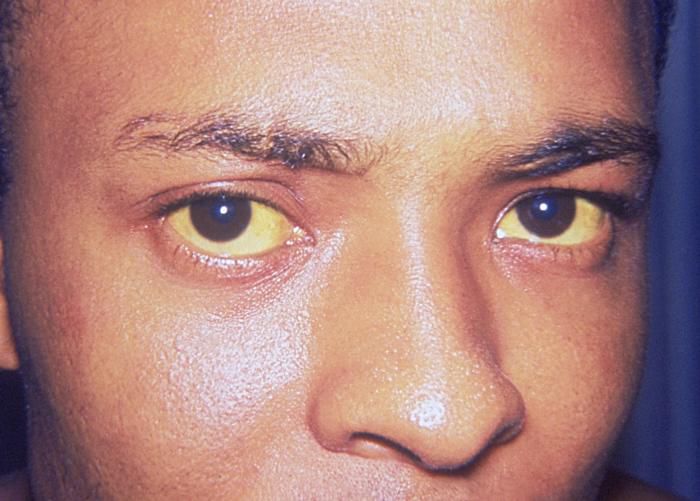-
 Photino
Photino
-
 Evaporitic
Evaporitic
-
 Ozone layer
Ozone layer
-
 Tsunamite
Tsunamite
-
 Central antihypertensive
Central antihypertensive
-
 Staphylococcus aureus
Staphylococcus aureus
-
 Endoscope
Endoscope
-
 HDCP
HDCP
-
 Heat lightning
Heat lightning
-
 Julian calendar
Julian calendar
-
 Spectrum
Spectrum
-
 Red dwarf
Red dwarf
-
 Chondroma
Chondroma
-
 Constipation
Constipation
-
 Lactose
Lactose
-
 Semiconductor laser
Semiconductor laser
-
 Anion
Anion
-
 Metabolic crossover
Metabolic crossover
-
 Stigma
Stigma
-
 Standard
Standard
-
 Substitution
Substitution
-
 Cloning
Cloning
-
 PFS
PFS
-
 NGC
NGC
-
 DHCP
DHCP
-
 Prostrate shrub
Prostrate shrub
-
 Gynandromorphism
Gynandromorphism
-
 Oort cloud
Oort cloud
-
 VRML
VRML
-
 Barotrauma
Barotrauma
Jaundice
The alternative name for jaundice is icterus. It is a disorder involving yellow discolouration of the integument (tissues such as the skin and mucous membranes) caused by abnormal accumulation of bilirubin, a compound obtained from degradation of red blood cells. In early jaundice, the only symptom which may be seen is a change in the colour &nbsp of the white of theeyes.
Neonatal jaundice
Babies can be affected. They produce more red blood cells than adults and may develop excess bilirubin. Immaturity of the liver, which is unable to excrete the excess bilirubin, is then responsible for the jaundice. This is very common and is called physiological jaundice and resolves itself.
On the other hand, other forms are more serious. Cholestatic jaundice occurs despite normal functioning of the liver and normal levels of haemolysis (destruction of red blood cells). In this situation the bile is obstructed and cannot flow out normally. Bilirubin then passes into the blood. Above a certain level, the yellow pigment crosses the blood-brain barrier and seriously affects the brain, causing long term consequences. This form of jaundice is a medical emergency. In this situation, the baby's blood needs to be exchanged.
Jaundice in adults
Jaundice has several causes in adults:
- excessive haemolysis;
- obstruction of the biliary tract (gallstones or tumours);
- hepatitis;
- cirrhosis.
Jaundice therefore reflects a physiological failure, the cause of which needs to be treated.
 Bilirubin is a yellow pigment which discolours the eyes, skin and mucosal membranes. Jaundice may only be diagnosed in the early stages from the eyes. © Thomas F. Sellers/Emory University, DP
Bilirubin is a yellow pigment which discolours the eyes, skin and mucosal membranes. Jaundice may only be diagnosed in the early stages from the eyes. © Thomas F. Sellers/Emory University, DP
Latest
Fill out my online form.



